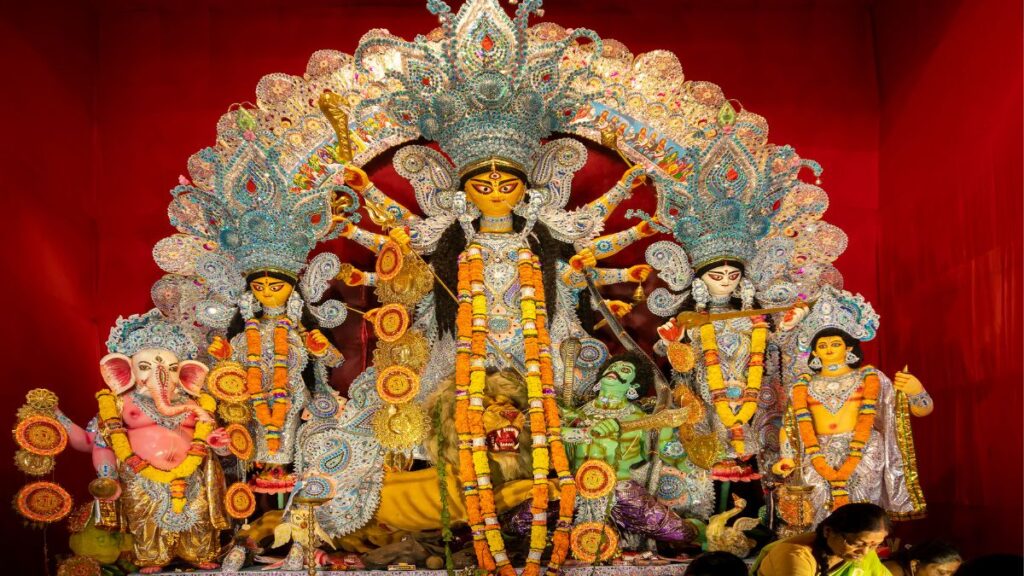Introduction
Navratri, one of India’s most vibrant and spiritually significant festivals, spans nine nights of worship, dance, music, and fasting. Aasthmi, the eighth day of Navratri, holds a special place in the hearts of devotees as it marks the peak of devotion to the various forms of the Goddess Durga. In this blog, we will delve into the significance of Navratri Aasthmi and how devotees celebrate this day, while also exploring the cultural traditions that make this festival so unique.
Navratri: A Festival of Divine Energy
Navratri, which means ‘nine nights’ in Sanskrit, is celebrated in honor of Goddess Durga and her various manifestations. The festival typically falls in the month of September or October and continues for nine days and nights. Aasthmi, also known as Maha Ashtami, falls on the eighth day of this auspicious celebration and is a day filled with profound religious significance.
Spiritual Significance of Aasthmi
Navratri Aasthmi is believed to be the day when Goddess Durga annihilated the demon Mahishasura, symbolizing the victory of good over evil. Devotees mark this day as the culmination of their spiritual journey, where they have relentlessly worshiped the Goddess for seven days, and now, on the eighth day, they seek her blessings for strength, protection, and wisdom.
Cultural Traditions on Navratri Aasthmi
- Garba Dance: One of the most iconic traditions of Navratri is the Garba dance. Communities gather in open spaces, beautifully adorned with colorful decorations and lanterns, to dance in concentric circles. Dressed in traditional attire, men and women whirl to the rhythmic beats of the dhol and the melodious tunes of traditional songs, celebrating the Goddess’s grace and presence.
- Fasting: Fasting is a common practice during Navratri Aasthmi. Devotees abstain from consuming grains and certain other foods during these nine days. Fasting is seen as a form of purification and a way to focus on one’s spiritual journey. Many people choose to break their fast on Aasthmi with a special meal.
- Worship: Devotees visit temples dedicated to Goddess Durga and other forms of the divine feminine on Aasthmi. They offer flowers, incense, and prayers, seeking the blessings of the Goddess. Temples are adorned with lights and decorations, creating a divine ambiance.
- Kanya Pujan: Kanya Pujan is a significant ritual on Aasthmi where young girls, usually nine in number, symbolizing the nine forms of Goddess Durga, are worshipped. Devotees wash their feet, offer them new clothes and gifts, and seek their blessings. It is a way of recognizing the divine energy within every girl.
The Devotion of Maa Mahagauri
Each day of Navratri is dedicated to one of the nine forms of Goddess Durga. Aasthmi pays homage to Maa Mahagauri, the daughter of the Himalayas. She is depicted with a trident in her right hand and a lotus in her left. Maa Mahagauri represents the creative power of the universe and the embodiment of divine strength. Her worship on Aasthmi signifies the strength and power within oneself.
Conclusion
Navratri Aasthmi is a day filled with deep spiritual significance and cultural richness. It symbolizes the victory of good over evil, the celebration of the divine feminine, and the unity of communities in dance and devotion. As the ninth day, Navami, approaches, devotees continue to worship the Goddess, concluding the festival with great reverence and joy. Navratri Aasthmi is not just a festival; it’s a profound experience of spirituality and tradition that continues to bring people together in celebration of the divine energy that permeates our lives.

